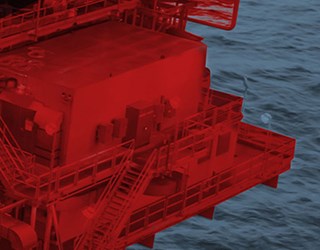NEWS The Dangers of Polymer Centralizers Breaking Downhole
Not all centralizers are created equal. Many polymer centralizers, while advantageous in some respects, can present significant risks if they break or wear down during casing running operations. Their material composition, while non-corrosive, is often not up to challenging wellbore conditions.
Risks of Polymer Centralizers
Wear and Tear: The vanes of polymer centralizers can wear down rapidly due to routine contact with casing and the wellbore. Once worn down, these centralizers are ineffective. This can lead to poor centralization resulting in insufficient cementing jobs and compromised well integrity. The absence of centralization can allow fluids to migrate, potentially leading to contamination and loss of reservoir control.
Breakage Downhole: In a worst-case scenario, polymer centralizers under harsh conditions can break downhole. When this happens, the fragments can obstruct the wellbore, leading to unwanted NPT.
Advantages of Steel Centralizers
Steel centralizers, in contrast, offer significantly greater wear resistance and durability. They are designed to withstand harsh downhole environments without degrading. Some key advantages include:
- Durability: Steel centralizers maintain their structural integrity even under extreme conditions, ensuring long-term performance.
- Wear Resistance: The robust nature of steel ensures that the centralizers do not wear down, providing consistent performance over the life of the well.
- Reliability: When a casing string equipped with steel centralizers needs to be pulled out, centralizers are often found to be intact and can be reused, demonstrating their reliability and cost-effectiveness.
Centek Centralizers: Proven Performance
We have extensive case studies demonstrating the superiority of our proprietary steel heat treated centralizers. Our products are known for maintaining integrity even in the most challenging wellbore conditions. For instance, in multiple documented cases, Centek centralizers have been found intact after casing strings were pulled out, proving their resilience and effectiveness.
Read rerun case studies
Case Study:
In a challenging land well project in Ecuador, Centek's S2 centralizers were used to ensure optimal centralization and successful cementing. Despite initial issues requiring the liner to be pulled out, all Centek centralizers and stop collars were intact and reused, showcasing their durability. The second liner run achieved target depth without problems, and effective centralization, mud displacement and cement placement were confirmed via cement bond logs. This case study highlights Centek S2 centralizers' robustness, even under extreme conditions.
Read full case study
Conclusion
The choice of centralizers in wellbore operations is critical to ensuring well integrity and operational success. While polymer centralizers may seem appealing for their price point and non corrosive composition, their propensity to break or wear down poses significant risks. Steel centralizers from Centek, offer superior durability and reliability, ensuring effective centralization and long-term well integrity. For operators seeking dependable performance, investing in high-quality steel centralizers is a prudent decision supported by numerous case studies and field successes.
PRODUCTS USEDS2 Bow Spring Centralizer
Engineered for both high strength and flexibility, the patented S2 is a premium single piece bow spring centralizer developed for challenging wellbores
PRODUCTS USEDS2 Hinged Bow Spring Centralizer
This high strength, two-piece centralizer is engineered for challenging applications typically requiring a single piece product. It incudes a high tensile, heat treated pin for secure fitment.
PRODUCTS USEDOSN Solid Body Centralizer
The OSN solid body centralizer induces turbulent flow increasing displacement efficiency and supporting cementing best practices




